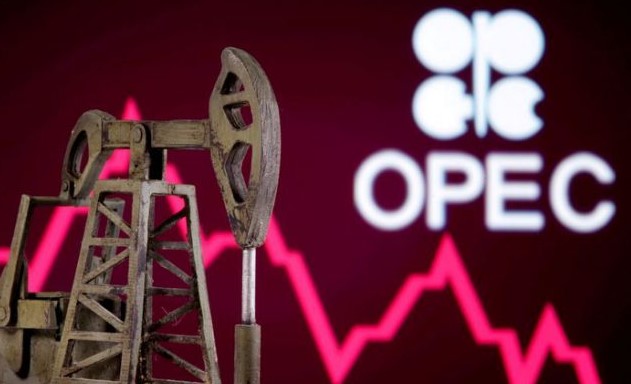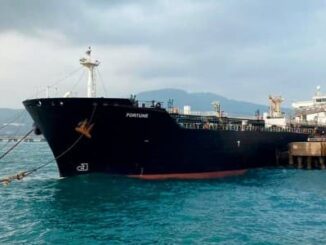
Energy News Beat Publishers Note: With the wild ride on OPEC meetings this week, this news is going to make it tougher for OPEC to control the members quotas for production. Therefore making the pricing on oil almost unpredictable.
In line with Iraq’s currently perilous finances and with its future target of increasing crude oil production to 7 million barrels per day (bpd) by 2027 at the latest, Baghdad last week announced plans to boost southern crude oil export capacity by 72 percent within the next three years. In this vein it signed a US$2.625 billion deal with South Korea’s Daewoo Engineering & Construction (Daewoo E&C) to build out the Al-Fao main export depot to the south of Basra.
In broad terms, Iraq’s Undersecretary for Extraction Affairs at the Oil Ministry, Karim Hattab, affirmed the Ministry’s renewed intention to increase the storage capacity at Al-Fao to 24 storage tanks, each of 58 thousand cubic metres (around 365,000 barrels), for a total capacity of around 8.76 million barrels. This would add to the six storage tanks already in place and is to all intents and purposes a reiteration – and expansion – of the original crude oil export infrastructure build-out plan that was about to be launched before Islamic State (IS) began to run riot across Iraq from 2006. At that time, the Oil Ministry had realistic plans in place to construct at least a further 12 full-time operational storage tanks and blending facilities in and around Al-Fao by the end of 2016, with the longer-term target being the 24 storage tanks and 8 million bpd+ targets above.
Although Iraq’s crude oil export routes to the North, and into mainland Europe via the Turkish port of Ceyhan, appears theoretically the better export option, the practical political considerations involved render the theory obsolete. The original Kirkuk to Ceyhan Pipeline, also called the Iraq-Turkey Pipeline (ITP), consisted of two pipes, which theoretically had a nameplate capacity of 1.6 million bpd combined (1.1 million bpd for the 46 inch diameter pipe, and 0.5 million bpd for the 40 inch one). Even before IS entered the picture though this pipeline was subject to repeated and ongoing attacks by various militant groups in the region. This led to the government of Iraq’s semi-autonomous Kurdistan region – the KRG – to oversee the completion of a single side track, from the Taq Taq field through Khurmala. This also runs into the Kirkuk-Ceyhan pipeline in the border town of Fishkhabur, with a nameplate capacity of 0.7 million bpd, which was then increased to 1 million bpd. Further complicated by the ongoing disagreement with the KRG over the budget-for-oil deal originally struck in 2014, Baghdad instead planned to renovate and re-open the Federal Government-owned oil pipeline section that runs from Kirkuk to Ceyhan, bypassing any Kurd control, before its finances dried up.
Such a build-out of export facilities in Al-Fao aligns with the fact that virtually all export efforts in the Federal Government of Iraq (FGI) run from Baghdad are focussed on the Basra facility in the south. To get to Basra, oil is moved via internal pipelines but these have previously been found to be unsound and in need of upgrading, according to Richard Bronze, cross-energy analyst for Energy Aspects, in London. From there, oil makes its way into the Al-Fao main export depot, where it is stored and blended. “Here again, though, there has not been adequate investment [in the past] and anything over current levels of oil coming in has not been sustainable, meaning that oil supplies have been backed before up in the oil fields themselves, which has led to production bottlenecks,” he told OilPrice.com. Previously, this also held up the roll-out of the Iraq’s new oil grade – Basrah Medium – that was to have added to the revenue streams generated by the existing Basrah Heavy and Basrah Light.
Once past Al-Fao, the situation is slightly more efficient as Al-Fao pumps the oil to the single-point moorings (SPMs) – there are now five, with four in constant use whilst the other undergoes regular maintenance – and there has been some expansion in the capacity of the existing offshore terminals at Khor al-Amaya (KAAOT) and Al-Basrah (ABOT). In the same context of dramatically increasing its oil export capabilities, Iraq late in 2020 signed an agreement with Dutch marine construction firm, Royal Boskalis Westminster, to build an artificial island south of the ABOT terminal in the Persian Gulf, with the new artificial island project to be located 4 nautical miles south of the ABOT. An export terminal would be attached to the island, and include four jetties, which would have loading facilities for up to four very large crude carriers at a time, each capable of holding up to 320,000 deadweight tonnage.
This contract announcement came shortly after the Oil Ministry stated hat discussions were well advanced with BP and ENI to run a US$400 million project to replace two old seabed pipelines, including one feeding the other main offshore terminal at the KAAOT terminal. The tenders for the broader plans to add another 1.8 million bpd of pipeline capacity from Al-Fao to the ABOT terminal were preliminarily planned to have taken place towards the end of 2020. They were, however, postponed due to the outbreak of the COVID-19 pandemic to later this year. On its own, when completed, the Sea Line 3 export pipeline project would add at least 700,000 bpd to Iraq’s southern export capacity.
BP
ENI
For the rest of the story: OilPrice
By Simon Watkins –



